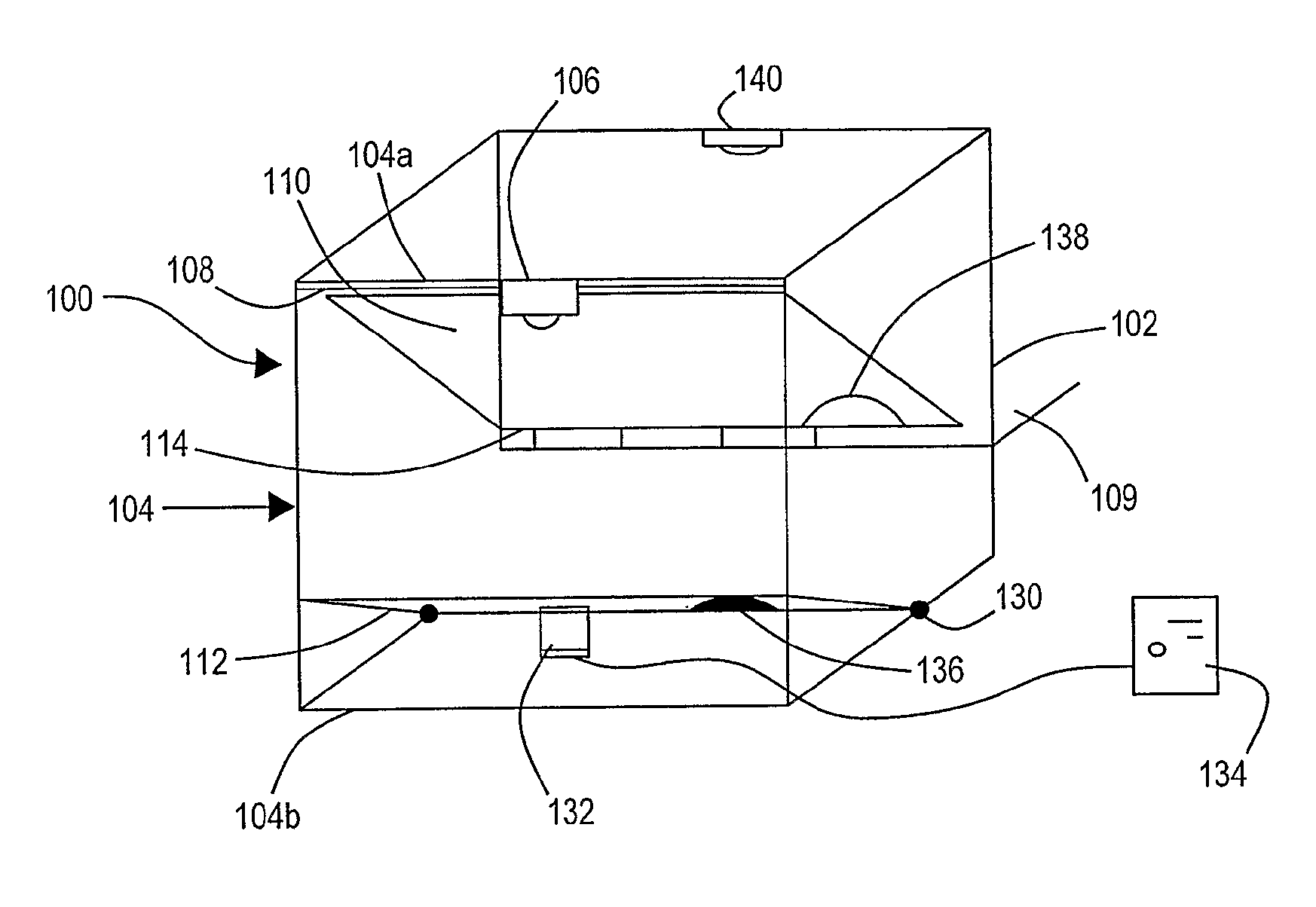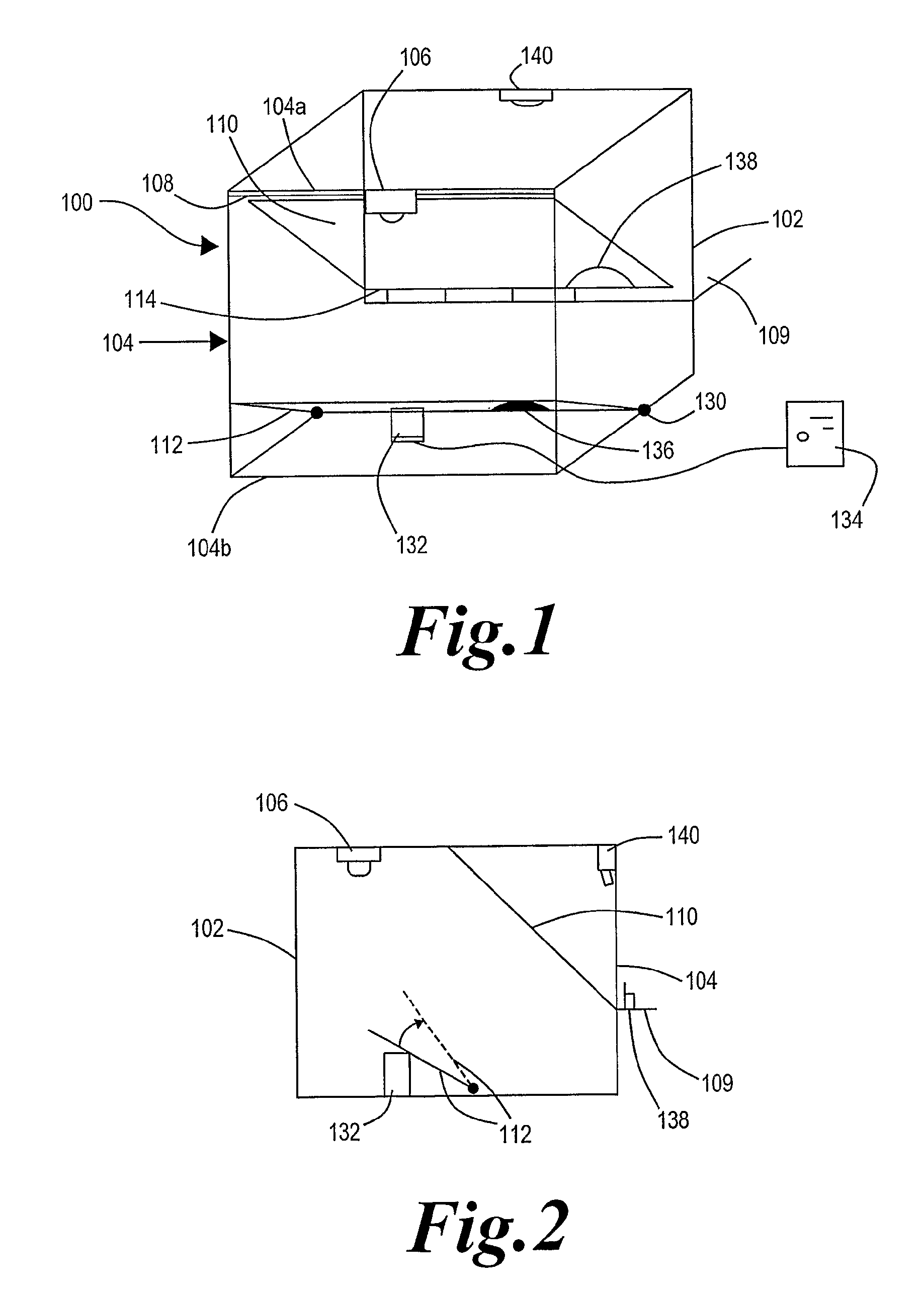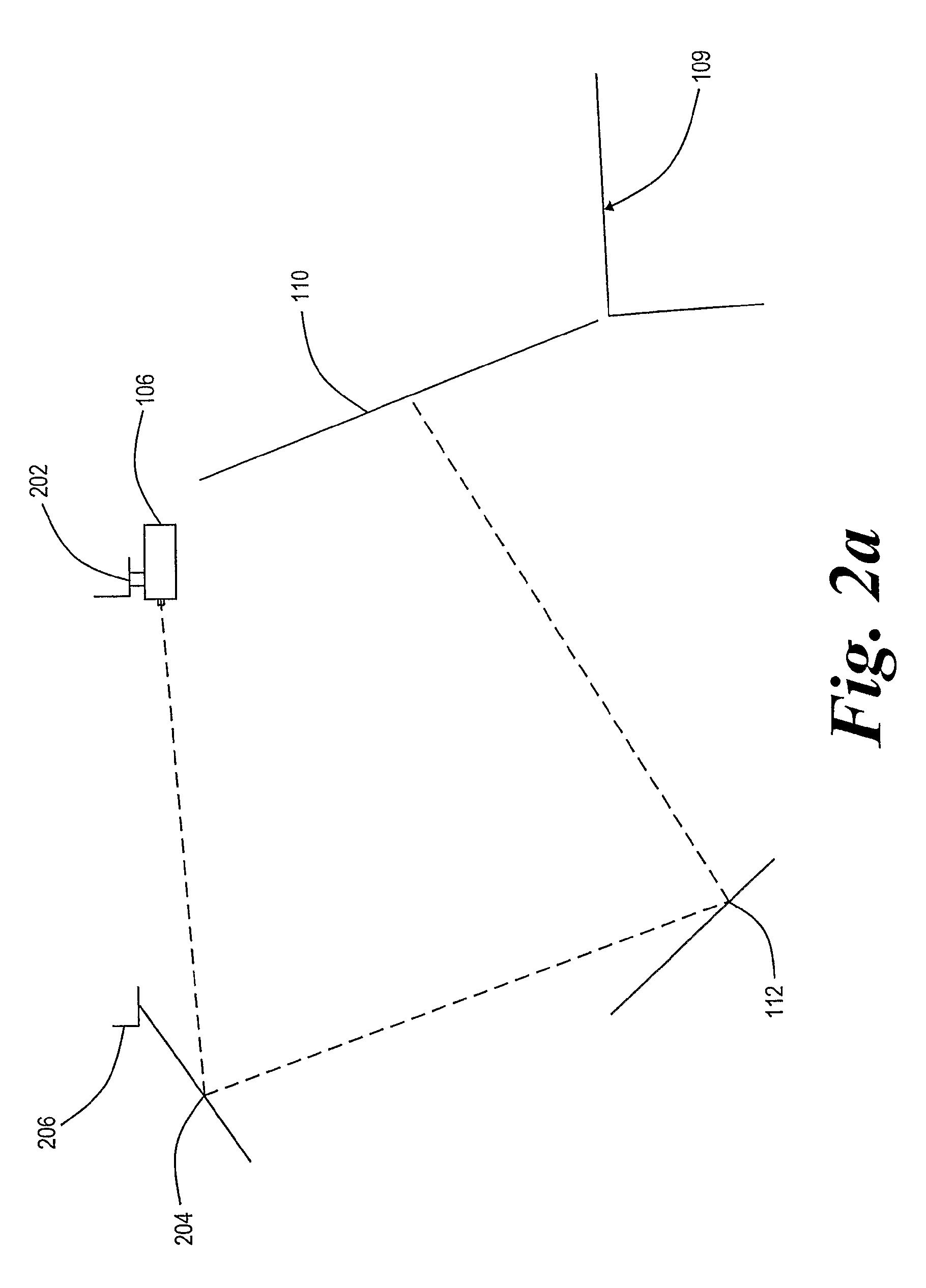Projection apparatus and method for pepper's ghost illusion
a projection apparatus and ghost technology, applied in the field of projection apparatus and method of pepper's ghost illusion, can solve the problems of significant levels of ambient light reflection from the screen detracting from the strength of the reflected image over the background, unwanted light hitting the projection surface, and affecting the viewed quality of the image projected onto the foil, so as to enhance the illusion of the projected image disappearing, reduce the contrast ratio of the projected image, and enhance the effect of the three-dimensional effect of the projected image interaction
- Summary
- Abstract
- Description
- Claims
- Application Information
AI Technical Summary
Benefits of technology
Problems solved by technology
Method used
Image
Examples
Embodiment Construction
[0049]Referring now to FIGS. 1, 2 and 4, a projection apparatus 100 comprises a box frame 102 formed of trusses 104, a projector 106, a support frame 108, a screen 110 held within the support frame 108 and a grey pigmented reflective board 112.
[0050]The projector 106 depends from a front upper cross-piece truss 104a of the box frame 102. The board 112 lies below the projector 106 at the base of the box frame 102. The screen 110, is inclined at approximately 45° to the horizontal and the front edge of the screen 110 is proximate the front upper cross-piece truss 104a of the box frame 102 and the rear edge of the screen is proximate a stage 109 that lies to the rear of the box frame 102.
[0051]The screen 110 is typically a polymeric foil, which can have a partially reflective coating upon a front face of the foil. The screen 110 is retained within the box frame 102 by means of tensioning straps 114 attached to the box frame 102, at the top and bottom edges of the screen 110. At a free ...
PUM
 Login to View More
Login to View More Abstract
Description
Claims
Application Information
 Login to View More
Login to View More - R&D
- Intellectual Property
- Life Sciences
- Materials
- Tech Scout
- Unparalleled Data Quality
- Higher Quality Content
- 60% Fewer Hallucinations
Browse by: Latest US Patents, China's latest patents, Technical Efficacy Thesaurus, Application Domain, Technology Topic, Popular Technical Reports.
© 2025 PatSnap. All rights reserved.Legal|Privacy policy|Modern Slavery Act Transparency Statement|Sitemap|About US| Contact US: help@patsnap.com



